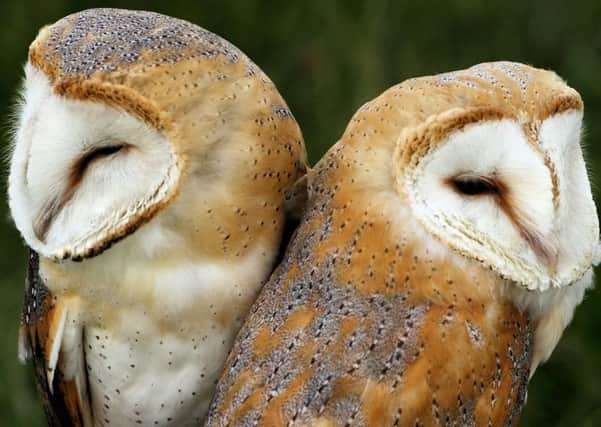Country Diary: Ghostly white hunters in the night sky


The many paths, scarce knowing which to choose,
All full of pleasant scenes – then wander home,
And o’er the beauties we have met, to muse.
John Clare
Our wanderings of late have been very diverse. The most dramatic having been the witnessing of tumultuous waves pounding the coast at Scalby Mills. Walls of water swept into the car park, along the foreshore, and Marine Drive on Friday January 13. The tidal surge was a combination of strong winds and high tides. A spectacular sight!
Johnson’s Pond location again revealed the two roe deer grazing in a meadow beyond the pond. Not much bigger than a large dog, their antlers have short branches. Their long ears, short tail, and white patch on the rump, identifies them as they feed mainly on tree shoots and shrubs. They seem most active at dawn and dusk, being shy creatures.
Advertisement
Hide AdAdvertisement
Hide AdJust leaving, and our barn owl re-appeared too, and briefly skirted the field boundary before heading north.
We proceeded up Limestone Road in Burniston to another barn owl site. Sure enough, we were shortly rewarded with excellent views of a pair of barn owls silently quartering a field. Closer views of their ghostly white shapes as dusk descended, revealed their golden buff upper parts, white underparts, white heart-shaped face and dark eyes. Hunting mainly at night, they seek rats, mice and voles.
A drive through Brompton, in the vicinity of Brompton Hall School proved a fortunate one. Attention was drawn to a pair of hares in a field across the road.
It was quite a rare sighting these days. The female was slightly smaller than the male. Their long black-tipped ears and large eyes provide acute hearing and eyesight. Aware of possible danger, their long and powerful hind legs swiftly bore them away. They disappeared in a flash.
Advertisement
Hide AdAdvertisement
Hide AdWe were recently puzzled by what appeared to be a penguin standing motionless on an island at Seamer Road mere. Its black back and wings, white front, and scarf-like neck band showed clearly in the evening light. Only when it eventually turned its head, did we observe its long bill. It became obvious it was an immature cormorant!
A highlight has been a drive along the Roman road between Malton and Hovingham to the ancient and picturesque village of Barton-le-Street. It lies on the slopes of the Howardian Hills overlooking the vale of Pickering. The church of St Michael and All Angels is overwhelming, with a unique treasury of late Romanesque sculpture dating from the 1160s! [This Norman church must have been one of the most highly decorated in medieval Britain.]
On the roadside verge we watched a wren threading its way almost invisibly through grasses at the foot of stone walling, seeking live food in crevices. Winters are hard times for wrens.